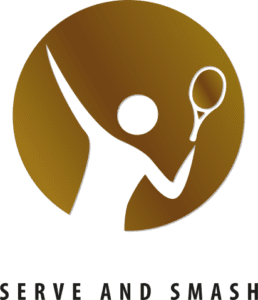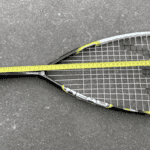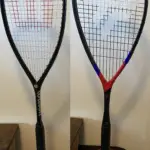This post may contain affiliate links.
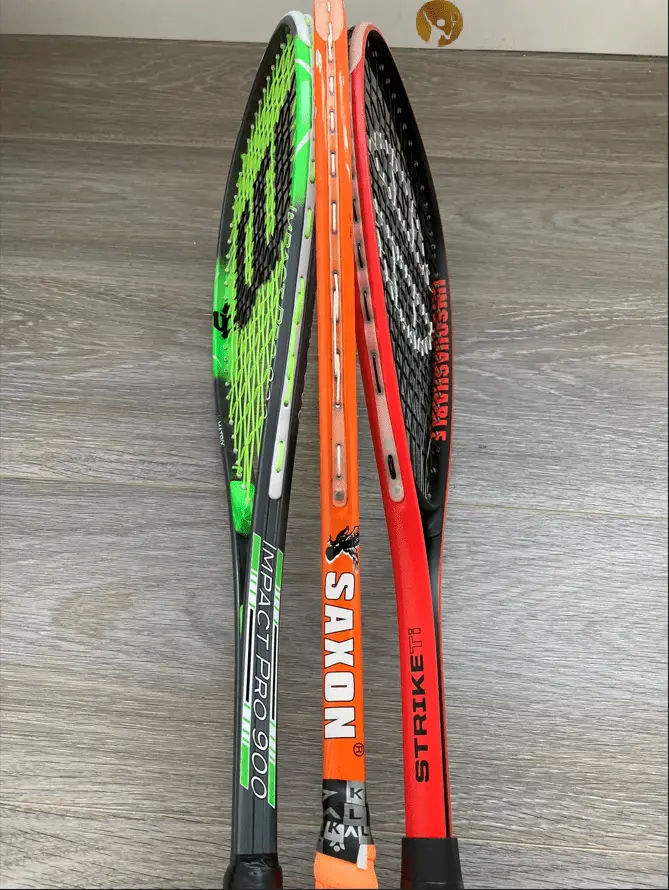
Having owned many squash rackets in several price ranges, I was curious to find out whether is it worth it to go for the cheapest option? So I went and bought a couple of the cheapest rackets I could get to see what value you would get.
The cheapest rackets are not worth it for players who are aiming at developing their squash skills and therefore are more focused on quality instead of solely the lowest price. However, players fixated on only price and racket weight (for beginners) might get sufficient value out of it.
To help you figure out whether it is worth it, read on. Oh and be sure to bring your conscience with you. No worries, I’ll explain later.
In this article you will find the answer to these questions:
- How much do cheap squash rackets cost?
- What do cheap squash rackets have in common?
- What materials are used for cheap squash rackets?
- What is the maximum squash racket weight allowed?
- What is the optimal squash racket weight?
- What racket type is used in cheap squash rackets?
- So exactly how serious are you about progressing in squash?
- Will cheap rackets impede your progress?
How much do cheap squash rackets cost?
You can get a beginner squash racket (adults or kids) for as little as $11, while $30 is still considered a cheap racket. All cheap rackets in this price range are aimed at beginners, both kids, and adults.
To illustrate this, let’s look at the average cost of a squash racket for each category of the target audience (beginners, intermediate, advanced, kids).
A beginner racket will cost you between $14 and $79, whereas an advanced racket ranges between $96 to $203. If you are looking for an intermediate racket it costs you between $56 and $192. Children’s rackets In this article I cover the price for all four categories in greater detail. Nevertheless, it is apparent that cheaper rackets are targeted at beginners, both adults, and kids.
I cover the price for all four categories in greater detail. Nevertheless, it is apparent that cheaper rackets are targeted at beginners, both adults, and kids.
Okay, now we know what the cheapest rackets on the market cost, but what do you actually get when you buy one of those rackets? To already get you started, let’s look at the common aspects that appear among cheap squash rackets.
What do cheap squash rackets have in common?
- Less durable materials (aluminum)
- Heavier rackets (180-200 grams)
- Classic closed throat racket
- Targetted at beginners (adults and kids)
Next up, we are delving into the details of each of the aforementioned common aspects.
What materials are used for cheap squash rackets?
Cheaper squash racket frames are generally made out of aluminum, while a nylon monofilament is used for cheaper squash strings.
Join me in this thought experiment to explore if a racket can be even made below $10. Let’s assume that 1kg of aluminum costs around $3, which is roughly the case at the time of writing. Even a heavy racket that weighs around 200 grams, would only cost around $0.60. Sure, there are other costs involved to produce the final product. However, this goes to show that even the main raw material used, does contribute to only 6% of the price of the racket.
Find out in this article how higher quality materials contribute to extending the lifespan of your racket.
how higher quality materials contribute to extending the lifespan of your racket.
Cheaper squash strings are made out of a thicker nylon string, also known as monofilament. Since the strings are thicker, they are also stiffer and provide less flexibility. In this article , I discussed the most commonly used type of strings and their qualities.
, I discussed the most commonly used type of strings and their qualities.
Composite materials are considered of the greatest quality for squash racket frames. According to market research , four out of five rackets are made of composite materials (carbon fiber or titanium). Another frequently used material is aluminum, which is heavier than rackets made of composite materials. For example, aluminum weighs approximately twice as much as carbon fiber. While wooden squash rackets used to be the prevailing material, they have almost disappeared from the squash courts. Overall, carbon fiber-based rackets offer the best durability because it is lightweight and high in strength. Other reasons composite rackets consist of 80% of the annual production are the improved weight distribution and shock absorption qualities. This makes composite rackets the better choice over aluminum rackets.
, four out of five rackets are made of composite materials (carbon fiber or titanium). Another frequently used material is aluminum, which is heavier than rackets made of composite materials. For example, aluminum weighs approximately twice as much as carbon fiber. While wooden squash rackets used to be the prevailing material, they have almost disappeared from the squash courts. Overall, carbon fiber-based rackets offer the best durability because it is lightweight and high in strength. Other reasons composite rackets consist of 80% of the annual production are the improved weight distribution and shock absorption qualities. This makes composite rackets the better choice over aluminum rackets.
Now we know that aluminum rackets are heavier than other commonly used materials, but what about the maximum weight for a squash?
What is the maximum squash racket weight allowed?
According to the WSF regulations, squash rackets have a maximum weight of 255 grams (9.0 ounces). This is also the only weight restriction set for manufacturing a squash racket. Note that frame weight is noted as the weight for the unstrung racket. This also applies to the maximum racket weight of 225 grams (9.0 ounces). As a consequence, you need to add 10-15 grams to approximate the weight of a strung racket. In case you already have put on a replacement grip, you need to factor in an additional 20 grams. Therefore if you would buy a racket of the maximum (frame) weight, it would weigh around 290 grams (10.2 oz) when it is ready to actually play squash with.
Although the maximum weight of a squash racket is 255 grams, squash racket manufacturers are focussing their efforts on creating lighter rackets. According to market research, lightweight rackets (<150 grams) are expected to capture 85% of the total market by 2030. Next to that, factor in that many squash racket manufacturers are using lighter materials. This all supports the trend towards lightweight rackets and making the upper limit on racket weight less of an issue in real life.
Hopefully, you are convinced that the maximum weight is not something to consider while buying a racket. But what weight would you be aiming at?
What is the optimal squash racket weight?
Based on my own research and analysis, the recommended racket weight for each group is as follows :
is as follows :
The optimal racket weight for adults ranges between 100-210 g (3.5-7.4 oz), whereas children benefit from a weight between 130-180 g (4.6-6.3 oz). Experienced players should opt for the lower end of the recommended range. The same holds for players with a preference for speed and maneuverability. Beginners, on the other hand, are better off by going for the higher end of the recommended range. This is also true for players with a preference for power.
If you want to know more about the optimal racket weight for you, check out this article where I have covered this in great detail.
where I have covered this in great detail.
How much do the cheapest squash rackets weigh?
Jumping back to the actual rackets I purchased and compare the weight against the recommended racket weight. The cheapest four rackets range between 180 and 214 grams (6.3 – 7.5 ounces) while the optimal weight for a beginner racket is 180.9 grams. Focussing on the more specific recommendation considering the preference for speed versus power, I find that two rackets are aimed at power and the other two are more balanced. In sum, three (out of four) cheapest rackets fall within the recommended weight for beginners.
| Racket | Actual weight | Recommended weight – Power | Recommended weight – Speed |
|---|---|---|---|
| UNSQUASHABLE Strike Ti | 180 grams 6.3 ounces | 190 – 210 grams 6.7 – 7.4 ounces | 150 – 170 grams 5.3 – 6.0 ounces |
| OPFEEL SR 130 | 185 grams 6.5 ounces | 190 – 210 grams 6.7 – 7.4 ounces | 150 – 170 grams 5.3 – 6.0 ounces |
| Wilson Impact Pro 900 | 214 grams 7.5 ounces | 190 – 210 grams 6.7 – 7.4 ounces | 150 – 170 grams 5.3 – 6.0 ounces |
| Saxon | 210 grams 7.4 ounces | 190 – 210 grams 6.7 – 7.4 ounces | 150 – 170 grams 5.3 – 6.0 ounces |
What racket type is used in cheap squash rackets?
Closed throat or classic type of squash rackets are more prevalent among both cheaper and more beginner rackets compared to open throat/teardrop racket types. Both racket types exist for all targetted individuals, whether they are considered beginners, intermediate, advanced, or children.
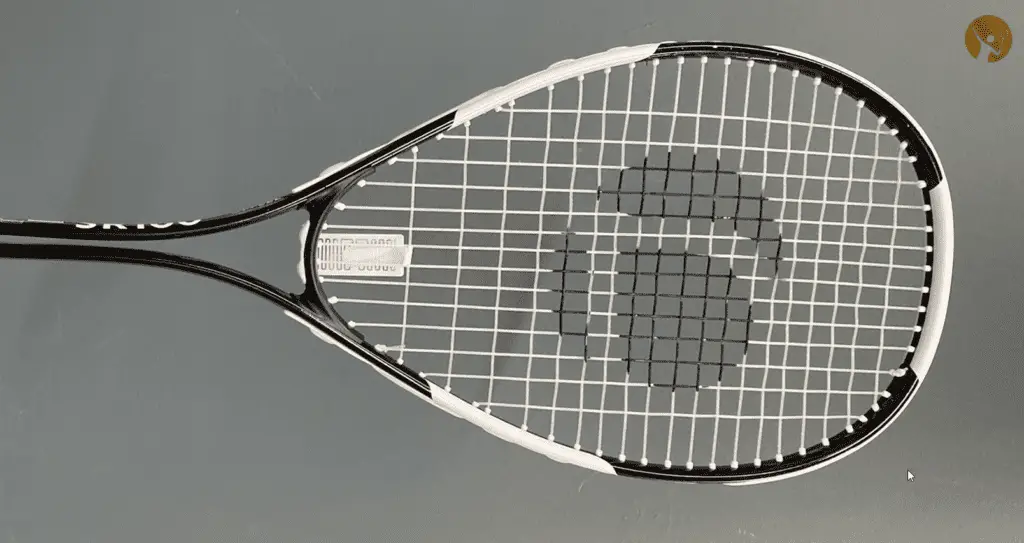
| Target audience | Closed throat / classic | Open throat / teardrop |
|---|---|---|
| Beginner | 77 % | 23% |
| Intermediate | 35 % | 65 % |
| Advanced | 39 % | 61 % |
| Children | 60 % | 40 % |
Based on my own research around 77% of beginner rackets are considered closed throat/classic, while 23% are open throat/teardrop. Closed throat/classic racket type is with 60% also representing the majority in the children’s rackets category. Almost the opposite is true for rackets targetted at intermediate and advanced players. Closed throat/classic rackets represent only 35% and 39% for respectively intermediate and advanced rackets. Open throat/teardrop rackets represent 65% and 61% of respectively the rackets targetted at intermediate and advanced players.
This research demonstrates another insight when taking the average price into consideration. The average price for open throat/teardrop rackets is higher, regardless of the target audience. When zooming in and comparing the average price difference, it is worth mentioning that the biggest average price difference (between closed and open throat) is for beginner rackets. Open throat/teardrop beginners rackets cost on average 38% more than a closed throat/classic racket. This can partly be explained by the fact that beginner rackets are cheaper. Absolute differences result in a larger percentual difference compared to the same absolute difference for a higher price point. The general implication is that whether you are looking for a beginner, intermediate, advanced, or kids racket, on average you will pay less for a closed throat/classic racket type.
So exactly how serious are you about progressing in squash?
No, but really? Just think about it for a minute.
No worries, I’ll wait.
Okay, since you’ve made up your mind now, let me proceed and explain why I questioned your conscience in the first place. First of all, it is good practice to be aware of your attitude towards your improvement. This means your attitude towards improving your squash skills in our case.
If you just want to try out squash or if you are looking for an activity with friends, you are not too overly focused on developing your skills. As a consequence, you are likely to care less about the quality of your gear. Therefore price seems to be the number one determinant when buying a squash racket. This is of course if you even choose to buy it all.
If on the other hand, you are serious about it and want to progress, you are more inclined to invest in high-quality gear. Sure, the price is still a relevant factor, but you are probably focusing on quality gear for a reasonable price. In most cases, you are not even looking for the cheapest racket.
Before you go and buy the best racket on the market, have a look at the link below, where I covered the total cost involved in playing squash.
Will cheap rackets impede your progress?
In general, cheap squash rackets will limit your potential to develop your squash skills. Therefore picking a racket just above your current skill level seems to be good practice. If you are too ambitious and pick a racket that is way out of your league, you are not likely to be optimally progressing.
The downside of using a heavier racket, is the fact that you will get used to this weight. As a consequence you will develop your game as well as your technique with this racket weight. At a beginner level your skill level and type of game is not so refined yet. However, as you reach more advanced levels, adjusting your racket handling according to your racket weight can be quite difficult let alone annoying. Imagine hitting almost every ball off target for a couple of games because you need to adjust your technique to properly handle the racket. Do I need to say more?
Therefore from a technique development point of view, there is a case to make to not use cheap rackets. If you have played squash several times and are serious about progressing, I would advocate to pick a racket that is just above your current level, where you can grow into. I go even as far as to make the case that this might be more economical in the long term. This is because of the opportunity cost of foregoing the opportunity to progress your game with a more suitable racket. Since if you continue to practice with a racket that is below your skill level, it is harder to advance your skill.
Thus if you are serious about mastering the game of squash, pick a racket that is just above your current level, it is also the economical move!
